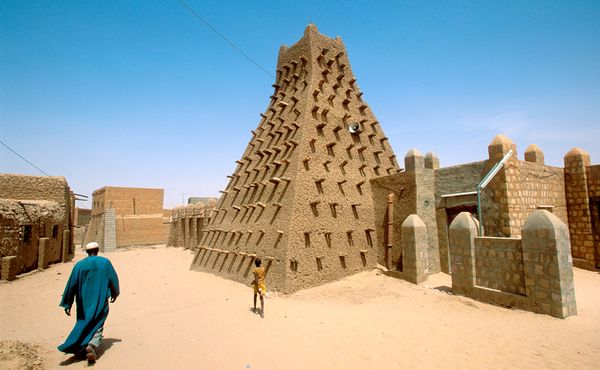 Saint Petersburg, Russia – The World Heritage Committee yesterday accepted a request from the Malian government to place Timbuktu (pictured) and the Tomb of Askia on the List of World Heritage in Danger.
Saint Petersburg, Russia – The World Heritage Committee yesterday accepted a request from the Malian government to place Timbuktu (pictured) and the Tomb of Askia on the List of World Heritage in Danger.“The decision aims to raise co-operation and support for the sites threatened by the armed conflict in the region,” according to a news release from the United Nations Educational, Scientific and Cultural Organisation (UNESCO).
The Committee, meeting here until 6 July, also asked Mali’s neighbours to do all in their power to prevent the trafficking in cultural objects from the sites.
“There is concern that such objects, notably important ancient manuscripts, be looted and smuggled abroad by unscrupulous dealers,” UNESCO added.
The 21 members of the World Heritage Committee urged the African Union and the international community to do everything possible to help protect Timbuktu, inscribed on UNESCO’s World Heritage in 1988, and the Tomb of Askia, inscribed in 2004.
According to UNESCO, Timbuktu was an intellectual and spiritual capital and a centre for the propagation of Islam throughout Africa in the 15th and 16th centuries.
The 17 metre high pyramidal structure of the Tomb of Askia was built by the Emperor of Songhai in 1495, and bears testimony to the power and riches of the empire that flourished in the 15th and 16th centuries through its control of the trans-Saharan trade.
Northern Mali has experienced upheaval, with thousands of people forced to leave their homes due to fighting between government troops and Tuareg rebels, which resumed in January.
In addition, Mali is also dealing with the impact of a coup by rebel Malian soldiers who took control of the country earlier this year.
The World Heritage Committee meets once a year, and is responsible for the implementation of the UNESCO World Heritage Convention, which defines the kind of natural or cultural sites which can be considered for inscription on the World Heritage List.
The Committee’s other responsibilities include the inscription or deletion of properties on the List of World Heritage in Danger.
The Director-General of UNESCO, Irina Bokova, has repeatedly urged international co-operation to protect the sites in Mali.
In April, following reports that rebels had over-run and looted centres containing thousands of ancient books and documents in Timbuktu, Ms. Bokova voiced concern about the risks posed by the fighting.
In May, following reports of wilful damage to mausoleums at the site, she sent a mission to the country to advance ways to work with the authorities on the preservation of the two sites.
During the mission, UNESCO and the Maliian government defined measures to safeguard World Heritage Properties in the country’s north – including Timbuktu.
The agreed-on steps to preserve the country’s cultural heritage include Mali finalising its accession to the 1999 Second Protocol to the Hague Convention of 1954 for the Protection of Cultural Property in the Event of Armed Conflict, as well requesting the inscription of Timbuktu and the Tomb of Askia on the List of World Heritage in Danger.
Mali will also draft a report on priority measures for its World Heritage sites, in line with international heritage conventions, and it will request technical and financial assistance from UNESCO and the international community.
The List of World Heritage in Danger is designed to inform the international community of threats to the outstanding universal values for which a property has been inscribed on the World Heritage List, and to encourage corrective action.
DD


